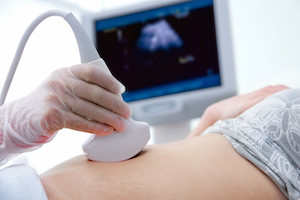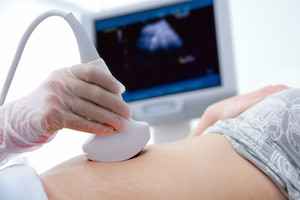We are experiencing a very high volume of calls and messages and ask for your patience. We will answer your portal messages within 48 hours.
We are experiencing a very high volume of calls and messages and ask for your patience. We will answer your portal messages within 48 hours.

 "Is my hCG level okay?" is a very common question of expectant mothers. Studies surrounding hCG levels done 14 days after egg retrieval in patients with day-2 transfers as well as comparing hCG levels in day-5 vs. cleavage stage embryos have been conducted and reported on, leading fertility specialist to emphasize the wide variation in first hCG levels and the importance of follow up hCG levels and ultrasounds to confirm it to be a normal ongoing pregnancy.
"Is my hCG level okay?" is a very common question of expectant mothers. Studies surrounding hCG levels done 14 days after egg retrieval in patients with day-2 transfers as well as comparing hCG levels in day-5 vs. cleavage stage embryos have been conducted and reported on, leading fertility specialist to emphasize the wide variation in first hCG levels and the importance of follow up hCG levels and ultrasounds to confirm it to be a normal ongoing pregnancy.
In a recent paper (Fertil Steril 2015;103:1526-31), Oron et al. from McGill University in Montreal, Canada has presented data on hCG levels after single embryo transfer. Researchers evaluated the predictive value of hCG levels measured 16 days after egg retrieval in 1026 women. There were 801 (638 pregnancies) single blastocyst transfers and 225 (167 pregnancies) single cleavage stage embryo transfers. Here are the results:
The mean hCG level resulting from a single fresh blastocyst transfer (299 ± 204 IU/L) were significantly higher than those from a cleavage transfer (245 ± 204 IU/L). This difference remained after adjusting for confounding variables. The threshold value predicting a clinical pregnancy for a cleavage embryo was 100 IU/L, and for a blastocyst transfer, 133 IU/L.
There is an important factor that needs to be kept in mind while interpreting this data. The hCG levels were drawn 16 days after egg retrieval. This is two days longer than the routine followed by many programs (including InVia). They are therefore higher than previously reported numbers.
Also, this data is from single embryo transfers. It is possible that when multiple embryos are transferred, more than one may implant, but only one embryo survives. Initial hCG levels are higher in twins and therefore the first hCG level may be different when multiple embryos are transferred.
There were 16 twin pregnancies (12 from blastocyst and 4 from cleavage stage embryos) and data from these were not included in the analysis.
The authors suggest that this may be due different patient characteristics between the two groups. The blastocyst transfer group was younger, had less assisted hatching, a higher rate of good quality embryos and a higher clinical pregnancy rate. A complex statistical analysis (logistic regression, ROC curve) of the data showed the blastocyst transfer group had higher initial serum hCG levels even after correcting for these variables.
There could be other theoretical explanations for this phenomenon. This include embryo quality, impact of culture and media, and larger (trophoblastic) cell mass in blastocysts,
They concluded that the initial serum hCG values are higher after the transfer of a single fresh blastocyst embryo compared with a single fresh cleavage stage embryo transfer. Once again, these numbers are to be taken as guidelines and not literally. It is important to keep your follow up appointments, continue your medications and follow your doctors instructions regardless of the hCG level.
To see a Board-certified fertility specialist who will help you understand all of your test results, make an appointment at one of InVia Fertility’s four Chicago area fertility clinics.
Infertility treatment IVF InVia Fertility Specialists Early pregnancy

Entire Website © 2003 - 2020
Karande and Associates d/b/a InVia
Fertility Specialists
